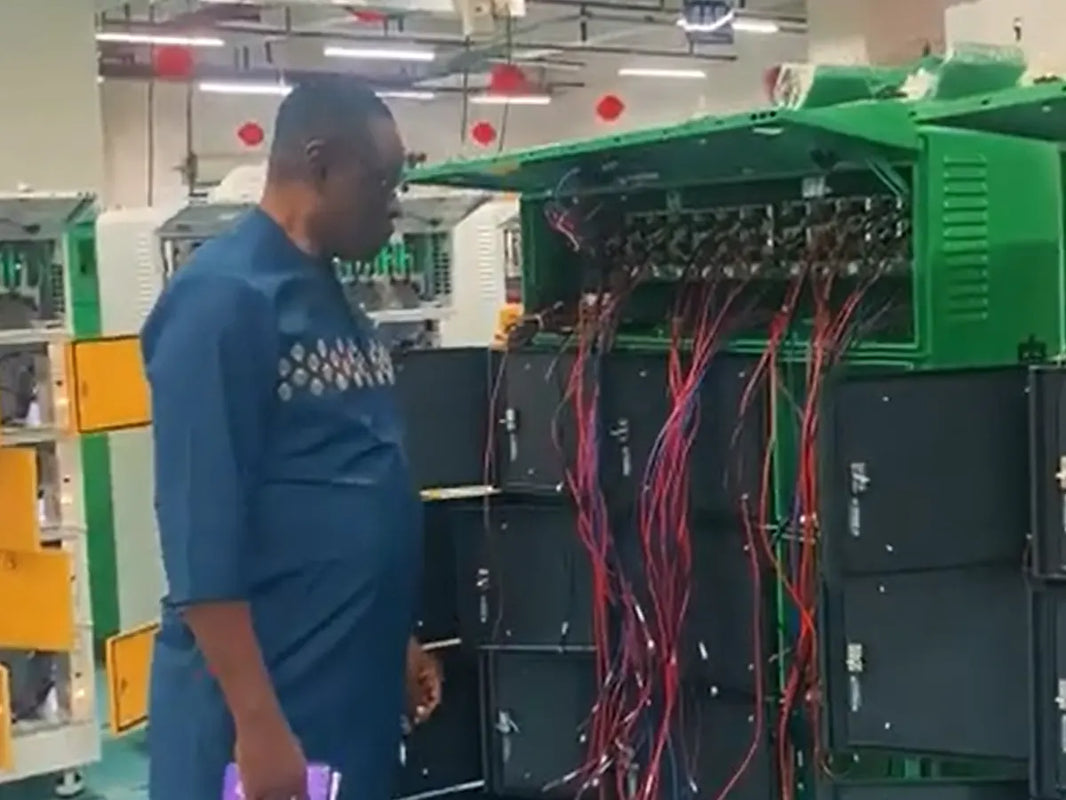Batteries are essential in vehicles, solar, and off-grid energy systems, but connecting them efficiently can be challenging. The passage explains why extending battery cables is often necessary, covering car modifications, solar setups, and energy storage systems. It provides practical guidance on wire selection, AWG standards, connection methods, and safety precautions. Readers will learn how to plan, install, and maintain extended battery cables for optimal performance and reliability, ensuring minimal voltage drop and safe operation across diverse applications.

Main content:
- Why Extending Battery Cables Is Needed
- Extending Battery Cables in Car Modifications & Relocation
- Extending Battery Cables in Solar, Off-Grid & Energy Storage Systems
- Risks of Extending Battery Cables
- Battery Cable Basics for Extending Battery Cables
- Choosing the Right Gauge for Extending Battery Cables
- Connection Methods & Techniques for Extending Battery Cables
- Safety & Standards for Extending Battery Cables
- How to Extend Battery Cables
- Conclusion
- FAQs
Why Extending Battery Cables Is Needed

In many real-world applications, users often need to adjust the wiring between batteries and loads, making extending battery cables a very common solution. Whether in vehicles, off-grid systems, or energy storage setups, changes in spatial layout can result in insufficient cable length. Extending cables solves these wiring limitations, allowing batteries to fit more installation positions and system structures.
Extending Battery Cables in Car Modifications & Relocation
Many people relocate car batteries from the engine bay to the trunk or other positions to optimize weight distribution or modify audio systems. Extending the starter cables becomes necessary.
Starter system upgrades: High-performance audio systems, amplifiers, and other high-draw equipment often require extended and thicker cables.
In off-road/camping vehicles and RVs, dual batteries or mobile battery setups often require extended cables.
To meet these needs, vehicle owners usually use longer and thicker wires and may even use a battery cable extender to enhance cable reach. With proper layout and professional connections, the power system can remain stable even with the new wiring configuration.
Extending Battery Cables in Solar, Off-Grid & Energy Storage Systems
In off-grid solar systems, batteries may be placed in less convenient locations, such as basements, dedicated battery rooms, or cabinets, requiring extended cables to connect controllers, inverters, or chargers.
In van life or RV setups, cables between solar panels, batteries, and controllers are often long, necessitating extended battery cables.
Some users extend cables to connect the engine battery (starter battery) to the solar charging system, achieving integration or shared use.
In these systems, due to significant component placement differences, extending battery cables provides greater installation flexibility, allowing optimal wiring between solar panels, inverters, and energy storage batteries, improving system stability and efficiency.
Risks of Extending Battery Cables

Voltage drop risk when extending cables
The most direct risk of extended cables is voltage drop. Longer wires with higher impedance reduce voltage at the device end, potentially causing starting difficulties, inverter alarms, or reduced charging efficiency. To overcome this, when implementing extended battery cables, thicker wires should be chosen and cable paths minimized, keeping the system within a safe operating voltage range.
Overheating risk
If cable thickness is insufficient or current is too high, extended cables can overheat due to limited current-carrying capacity. In high-load scenarios, such as car audio amplifiers, inverters, or high-power motors, overheating may damage insulation or even cause fires. When extending battery cables, ensure cable specifications match current requirements and protect the wiring to avoid long-term heat accumulation.
Risks of poor connections
Extending cables adds junctions; if connections are loose, improperly crimped, or insufficiently insulated, contact resistance increases, leading to localized overheating or disconnection. Junctions are the weakest points in a cable run, so use qualified crimp terminals, heat-shrink tubing, and anti-corrosion coatings to ensure the extended section is as reliable as the original wiring and resistant to vibration, oxidation, or moisture.
Battery Cable Basics for Extending Battery Cables
What is a battery cable
Battery cables consist of three main parts: conductor, terminal, and insulation, forming the core pathway for stable battery operation. Conductors transmit current, often using stranded copper for flexibility and low resistance; terminals ensure secure connections; insulation protects the cable from heat, moisture, and wear. Understanding these components helps users choose appropriate materials and specifications when extending battery cables, preventing system failures due to poor cable quality.
AWG wire gauge meaning
“AWG” (American Wire Gauge) is the international standard for measuring wire thickness, where smaller numbers indicate thicker wires. Thicker wires reduce resistance, heat generation, and improve system safety and stability. For high-current or long-distance wiring, choosing a lower AWG is essential. Correct AWG selection is one of the most critical steps when extending battery cables.
Effect of conductor cross-section and materials on performance
The larger the conductor cross-section, the higher the current it can carry and the lower the resistance. Copper is commonly used due to excellent conductivity and mechanical strength. Aluminum is lighter but has higher resistance and is usually not recommended for high-power battery systems. When using a battery cable extender to extend lines, prioritize large cross-section, stranded copper conductors to maintain sufficient safety margins.
Effect of cable length on resistance and voltage drop
As cable length increases, total circuit resistance rises significantly, causing voltage drop. This is particularly harmful for starter systems, inverters, and high-power loads, as insufficient voltage can lead to starting failure or reduced power. When designing extending battery cables, cable length should be strictly controlled, and thicker conductors selected for longer distances to minimize energy loss.
Choosing the Right Gauge for Extending Battery Cables

Selecting wire gauge based on current requirements
Different circuits have different current demands. Starter circuits typically require very high instantaneous current, while high-power accessories or charging systems need to carry sustained higher currents. Therefore, wire gauge selection should be matched to the maximum charging current to ensure cables do not overheat under load. For users planning to extend circuits, this step determines the overall system stability.
Matching length with wire gauge
The relationship between length and gauge: longer cables require thicker wires to reduce voltage drop. As cable length increases, resistance accumulates, requiring a larger wire gauge to compensate for voltage loss. For example, when relocating a battery to a vehicle trunk or setting up a long-distance energy storage battery bank, sufficiently thick cables must be chosen to ensure performance. This principle is the most basic and essential rule for all cable extension projects.
Impact of environmental factors
In environments with high temperature, strong vibration, humidity, or corrosive conditions, cables need higher stability and protection. High temperatures reduce current-carrying battery capacity, vibration increases the risk of loose connections, and moisture or corrosion can damage insulation and conductors. In such cases, users typically select thicker, more durable insulation cables to enhance overall reliability when extending battery cables.
Connection Methods & Techniques for Extending Battery Cables
When actually extending battery cables, selecting the correct connection method is crucial. Common approaches include replacing the entire cable or splicing to extend it, using reliable crimp terminals, screw terminals, or specialized extension accessories. In outdoor or marine environments, heat-shrink insulated connectors and waterproof terminals significantly improve moisture resistance, a key technique emphasized in many battery skills tutorials.
Using high-quality crimping tools, such as heavy-duty crimp pliers, ensures secure connections and prevents heating or voltage drops due to poor contact. Experience shows that while soldering provides good conductivity, solder joints are more prone to cracking in vibration-prone environments. Therefore, mechanical crimping is generally considered more suitable for extending battery cables in most vehicle or marine applications.
Safety & Standards for Extending Battery Cables
When extending battery cables, industry safety standards must be followed, such as SAE J1127 and relevant vehicle or marine cable specifications. Using wires that meet these standards ensures stability under high temperature, oil exposure, or vibration. Improper gauge, loose connections, or low-quality cables can overheat and pose fire risks, which is repeatedly emphasized in battery skills guidelines.
Proper routing is also critical: avoid sharp bends, excessive tension, or long-term friction to prevent cable damage in vehicles or marine environments. The quality of the negative (ground) path also affects overall system performance. When using a battery cable extender or extended battery cables, ensure the ground path is clean, secure, and has good contact. Finally, adding appropriate fuses or circuit breakers for the extended circuit further improves safety, keeping the system controllable and protected in case of short circuits.
How to Extend Battery Cables

Following clear, standardized steps when extending battery cables ensures safety and reliability. The following six steps cover the full process from planning to maintenance and apply whether using a battery cable extender or making extended battery cables.
Plan the route: measure required length and allow extra
Before starting, plan the cable route. Measure the accurate length based on the layout of the vehicle, solar system, or energy storage equipment, and leave at least 10–20% extra to prevent insufficient length due to stretching, vibration, or maintenance.
Select cables: confirm gauge, insulation rating, and conductor material
Choose cables based on wire gauge (AWG), current-carrying capacity, and insulation rating to ensure suitability for starter circuits, charging systems, or off-grid setups. Copper conductors, with lower resistance and higher reliability, are recommended for extended battery cables, while aluminum may be used in special cases with increased cross-section.
Prepare terminals and connectors: strip, crimp, or install connectors
When preparing terminals and connectors, strip the insulation to the appropriate length, then use a heavy-duty crimping tool to secure connections. If using a battery cable extender, install the connectors according to product instructions to prevent increased resistance or heating due to poor contact.
Protect and secure cables: vibration, abrasion, and insulation treatment
During installation, use cable ties, clamps, sheaths, or corrugated tubing to secure and protect cables, especially at metal edges, sharp corners, or areas with constant vibration. Proper insulation and protection extend the life of extending battery cables and reduce risks from environmental corrosion, mechanical wear, or temperature changes.
Inspection and testing: check resistance and voltage drop before and after powering
Before powering the system, use a multimeter to check continuity, connection resistance, and crimp integrity. After powering, monitor voltage drop and terminal temperature to ensure the extended cables do not negatively affect starting, battery charging, or inverter efficiency.
Maintenance recommendations: regularly check fasteners and corrosion
For long-term reliability, regularly inspect all connections for looseness, terminal oxidation, or insulation wear or cracking. Clean or replace any corroded or poorly contacting parts promptly to keep extending battery cables systems safe and stable.
Conclusion
Properly extending battery cables ensures system reliability, safety, and efficiency across vehicles and energy setups. By selecting the right wire gauge, using quality connectors, and following clear installation steps, users can minimize voltage drops and prevent overheating. Regular inspection and maintenance further guarantee long-term performance, making extending battery cables a practical solution for diverse electrical systems.
FAQs
Any way to safely extend solar battery cables?
To safely extend solar battery cables, always choose the correct wire gauge and high-quality connectors to prevent voltage drop and overheating. Properly insulating and securing the cables is crucial when extending battery cables. Following industry standards and checking connections regularly ensures that extending battery cables in solar setups remains reliable and safe.
How to widen battery terminals?
Widening battery terminals involves carefully adjusting the terminal clamps or replacing them with appropriately sized connectors. When extending battery cables, using properly sized terminals prevents loose connections and reduces resistance. Ensuring secure fittings while extending battery cables is essential for maintaining system efficiency and safety when handling high currents.
How to join two battery cables together?
Joining two battery cables together should be done with crimp connectors, soldering, or approved mechanical joiners. When extending battery cables, make sure the junctions are well insulated and mechanically secure. Proper techniques for extending battery cables minimize battery voltage drop, reduce heat buildup, and maintain reliable current flow across the system.
Is it better to crimp or solder battery cables?
Crimping is generally preferred over soldering when extending battery cables because crimped connections resist vibration and thermal cycling better. Soldered joints can crack under stress. For optimal results when extending battery cables, combine crimping with heat-shrink insulation, ensuring that extending battery cables remain safe and durable over time.
Can you put aluminum foil on a battery terminal?
Using aluminum foil on a battery terminal is not recommended. It can cause uneven contact, overheating, or corrosion. When extending battery cables, always use proper terminal connectors. Ensuring secure, stable connections when extending battery cables prevents power loss and protects both the battery and connected devices.
How do you make a dead battery good again?
Reviving a dead battery depends on its type and condition. For lead-acid or lithium batteries, carefully controlled charging may restore partial capacity. When extending battery cables, ensure connections are clean and corrosion-free. Proper handling and inspection while extending battery cables help avoid further damage and maximize recovery chances.















